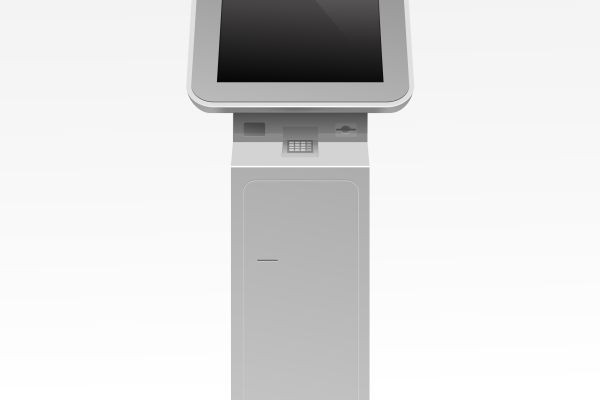Have you ever wondered why some kiosks effortlessly guide users while others struggle with clarity and focus? The secret often lies in the camera technology at play. Autofocus USB cameras are revolutionizing kiosk experiences, making them intuitive, efficient, and accessible to users of all kinds. Let’s dive into how these advanced cameras address key customer pain points and elevate interactive kiosks to new heights.
Common Challenges in Kiosk Camera Functionality
Interactive kiosks are becoming ubiquitous, from ticketing systems and self-checkout lanes to wayfinding stations and banking terminals. Despite their widespread adoption, users often face frustrations that can turn a convenient interaction into a cumbersome one.
-
Blurry or Poorly Focused Visuals: Static cameras often fail to adapt to users of varying heights, distances, or movements. This lack of clarity can confuse customers and delay processes.
-
Inability to Handle Dynamic Lighting: Kiosks in outdoor or high-traffic environments struggle with lighting conditions, leading to overexposed or underexposed images.
-
Lack of Adaptability for Different Users: From wheelchair users to tall individuals, kiosks must cater to a wide range of users. Static cameras frequently fall short in delivering consistent quality for everyone.
-
Time-Consuming Manual Adjustments: Kiosks with manual focus options require constant maintenance and calibration, resulting in operational inefficiencies and increased downtime.
The Role of Autofocus USB Cameras in Addressing These Challenges
Autofocus USB cameras bring precision and adaptability to kiosks, eliminating many of these pain points. Here’s how they excel in transforming the user experience:
1. Automatic Focus for Seamless Interactions
Autofocus technology ensures that the camera adjusts in real-time, maintaining sharpness regardless of the user's position. Whether a child, an adult, or someone in a wheelchair interacts with the kiosk, the camera provides clear visuals without manual intervention. This not only reduces customer frustration but also speeds up transactions.
2. Dynamic Adjustments for Lighting Variations
Equipped with advanced sensors and algorithms, autofocus USB cameras adapt to changing lighting conditions. Whether the kiosk is in a dimly lit parking lot or a sunlit open area, these cameras ensure consistently clear images, improving accessibility and usability.
3. Enhanced Customer Accessibility
Autofocus USB cameras create a more inclusive experience by catering to users with diverse physical needs. The ability to adjust focus instantly allows these cameras to accommodate people at varying distances or heights, ensuring everyone feels valued and supported.
4. Cost-Efficient Maintenance and Longevity
Because autofocus USB cameras eliminate the need for manual focus adjustments, they reduce the operational workload on maintenance teams. Fewer touchpoints for intervention mean longer service life and lower costs over time.
Applications of Autofocus USB Cameras in Kiosks
The versatility of autofocus USB cameras enables them to shine in a variety of kiosk applications. Let’s explore some prominent use cases:
Self-Checkout Systems
Retail environments demand speed and accuracy. Autofocus USB cameras help detect product barcodes, verify customer identities, and adjust seamlessly as users interact with the system. This ensures a smooth checkout process even during peak hours.
Ticketing and Wayfinding Kiosks
Public transit stations, airports, and event venues rely heavily on kiosks to issue tickets and guide users. Autofocus USB cameras ensure that all visuals—from QR code scanning to facial recognition—are crisp and accurate, even in crowded or poorly lit environments.
Banking and Payment Terminals
Security and precision are paramount in financial transactions. Autofocus USB cameras support secure identity verification and document scanning, providing the reliability necessary for sensitive tasks like account management or loan applications.
Healthcare Check-In Stations
Hospitals and clinics are embracing kiosks to streamline patient check-ins and reduce administrative bottlenecks. Autofocus USB cameras play a vital role in accurately capturing patient details, enhancing the efficiency of medical services.
The Value Proposition for Businesses
For businesses deploying kiosks, the inclusion of autofocus USB cameras is more than just a technological upgrade—it’s an investment in customer satisfaction and operational efficiency. Here’s why:
- Improved User Satisfaction: Clear visuals and seamless interactions reduce friction, ensuring customers leave with a positive impression.
- Reduced Downtime: Automated focus adjustments mean less frequent maintenance, allowing kiosks to operate consistently.
- Enhanced Brand Reputation: Offering accessible and reliable kiosks reflects a commitment to inclusivity and innovation.
Future Potential of Autofocus USB Cameras
The journey of autofocus USB cameras in kiosks doesn’t end here. Emerging technologies like artificial intelligence and machine learning are further enhancing their capabilities. Future advancements might include:
- Predictive Focus Adjustments: Cameras could predict user behavior and pre-adjust focus for even faster interactions.
- Facial Recognition Integration: Combining autofocus with facial recognition could streamline identity verification across industries.
- Environmental Awareness: Cameras could detect environmental factors like rain, glare, or fog, optimizing visuals accordingly.
Enhancing Every Interaction, One Focus at a Time
Autofocus USB cameras are redefining the standards for kiosk performance. By addressing critical pain points like clarity, accessibility, and adaptability, they pave the way for smoother, faster, and more enjoyable customer interactions. Whether you’re a business owner looking to upgrade your kiosks or a developer designing user-friendly systems, these cameras are a game-changer in interactive technology.
Experience the difference with autofocus USB cameras, and watch your kiosks deliver seamless visual adjustments that truly enhance dynamic interactions.


